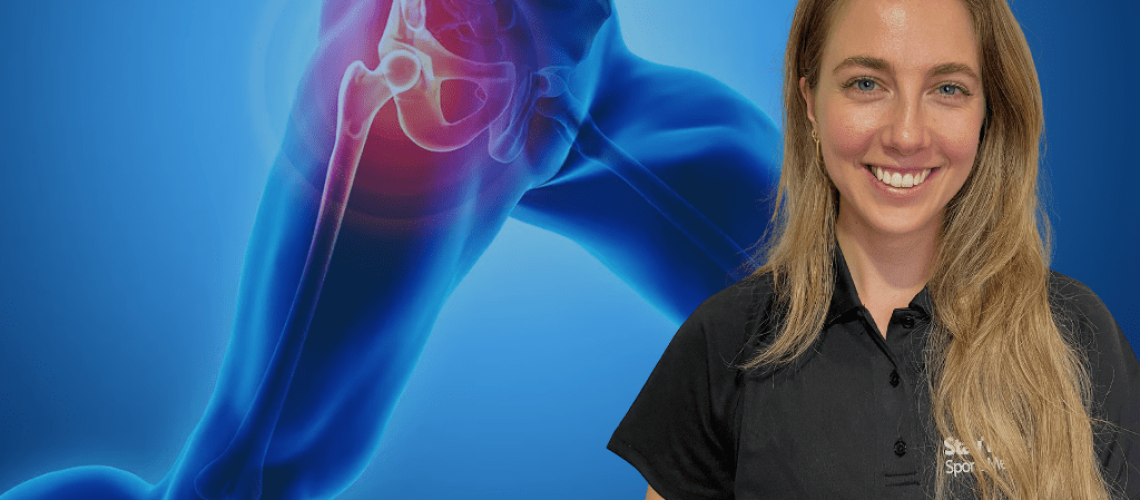Greater Trochanteric Pain Syndrome (GTPS) is a frequently encountered condition that affects the outside of the hip, yet it’s one that is still often misunderstood, even in clinical settings. Let’s break down the what, who, and how of this condition to provide a clearer picture.
WHAT is Greater Trochanteric Pain Syndrome?
GTPS – previously and commonly referred to as trochanteric bursitis – describes pain that arises from the lateral (outer) aspect of the hip. It is typically felt over the greater trochanter, the bony prominence at the top of the thighbone. While the term “bursitis” implies inflammation of the bursa (a small fluid-filled sac that cushions the tendons), GTPS is now recognised as a broader condition involving the soft tissues around the hip, especially the gluteal tendons.
WHO is affected?
GTPS tends to occur more frequently in women than men, with a reported ratio of 2-3:1. The condition most commonly presents in individuals aged between 40 and 60 years old. It may be more prevalent in those who are less physically active or have biomechanical imbalances that increase load through the outer hip region.

HOW does it develop?
The main driver of GTPS is now understood to be gluteal tendinopathy – a condition where the tendons of the gluteus medius and minimus (the smaller glute muscles responsible for hip stability) become irritated or degenerate over time, or become inflamed as a result of a direct trauma. While bursitis may still occur in some cases, it is not the primary pathology.
In fact, a large-scale study evaluating 877 patients found that only 8.1% had isolated bursitis. In contrast, gluteal tendinopathy was present in nearly 50% of the cases (Pianka et al, 2021) —highlighting the shift in understanding and diagnosis of this condition.
This insight has changed the way clinicians approach treatment. Instead of focusing on reducing inflammation alone (as you might with bursitis), management now involves strengthening the gluteal muscles, improving biomechanics, and modifying aggravating activities.
Takeaway
Greater Trochanteric Pain Syndrome is more than just an inflamed bursa—it’s often a chronic tendon issue affecting the gluteal muscles. With a more accurate diagnosis, treatment can be more targeted and effective, helping patients get back to moving pain-free.
If you or someone you know is dealing with persistent outer hip pain, it may be time to reassess the cause and seek a management plan tailored to gluteal health and load tolerance.
Dr Katelyn Waring
Osteopath
E: Katelyn.Waring@staytuned.com.au

Reference
Pianka, M. A., Serino, J., DeFroda, S. F., & Bodendorfer, B. M. (2021). Greater trochanteric pain syndrome: Evaluation and management of a wide spectrum of pathology. SAGE open medicine, 9, 20503121211022582. https://doi.org/10.1177/20503121211022582

